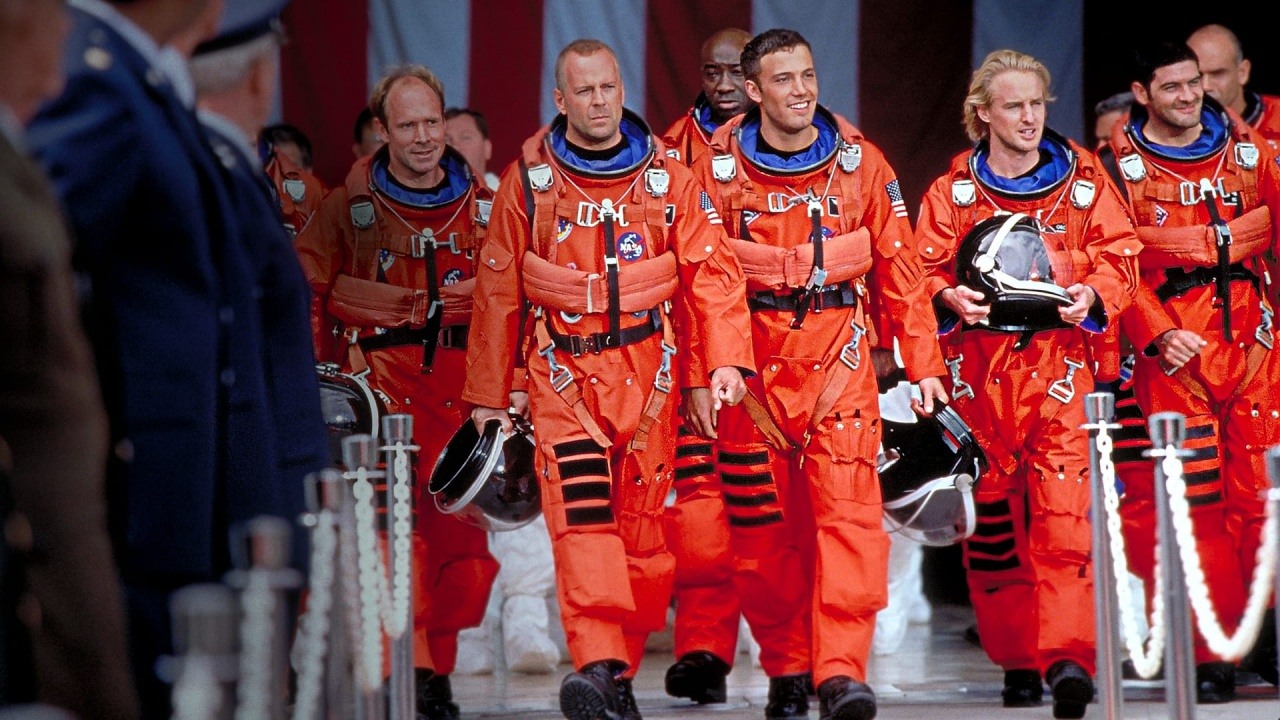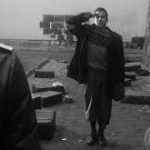Armageddon (1998)

“Armageddon,” directed by Michael Bay and released in 1998, is a quintessential example of late 20th-century Hollywood cinema’s penchant for high-octane action and emotional storytelling. The film, starring Bruce Willis, Ben Affleck, Liv Tyler, and a host of other notable actors, is not just an action-packed spectacle but also a profound narrative about human courage and sacrifice.
The plot of “Armageddon” centers around a catastrophic event that threatens the very existence of Earth. A massive asteroid, the size of Texas, is on a collision course with our planet. To prevent this impending apocalypse, NASA devises a daring plan to send a team of oil drillers into space to plant a nuclear device on the asteroid and destroy it from within. The mission is led by Harry Stamper (played by Bruce Willis), a tough but loving father and seasoned driller, whose team includes the brash but skilled A.J. Frost (Ben Affleck), who is romantically involved with Harry’s daughter, Grace (Liv Tyler).

The film opens with a dramatic and visually striking sequence that sets the stage for the impending disaster. A series of catastrophic events, including meteor showers causing widespread destruction, creates a sense of urgency and establishes the high stakes of the mission. As the story progresses, the film delves into the personal lives and relationships of the characters, particularly focusing on the dynamics between Harry and his daughter, Grace, and A.J.’s quest to prove himself worthy of both his girlfriend and the dangerous mission.
“Armageddon” is renowned for its over-the-top action sequences, which are complemented by a powerful musical score composed by Trevor Rabin and the iconic Aerosmith ballad “I Don’t Want to Miss a Thing.” The film’s special effects, including the depiction of space travel, asteroid impacts, and the subsequent destruction of the asteroid, are designed to captivate and immerse the audience in the high-stakes drama.

However, beyond its visual spectacle, “Armageddon” explores themes of heroism, sacrifice, and human resilience. The film portrays the crew of the space mission as unsung heroes who are willing to risk everything for the greater good. Harry Stamper’s character, in particular, embodies the ultimate sacrifice. His selfless decision to stay behind and manually detonate the bomb to ensure the asteroid’s destruction demonstrates an extraordinary level of bravery and love. This sacrifice is not just a plot device but a central element that underscores the film’s emotional core.
The portrayal of the personal relationships in the film adds depth to the narrative. The tension between Harry and A.J., along with the father-daughter dynamic, provides an emotional anchor amid the chaos. The film balances its grandiose action sequences with intimate moments that highlight the human side of its characters.

Despite its mixed critical reception, with some critics pointing out its melodramatic elements and formulaic plot, “Armageddon” remains a beloved film for its entertainment value and emotional impact. It is a testament to the era’s fascination with end-of-the-world scenarios and the human spirit’s ability to overcome seemingly insurmountable odds.
In summary, “Armageddon” is more than just an action movie; it is a film that combines thrilling visuals with a heartfelt story of courage and sacrifice. Its legacy endures as a quintessential example of blockbuster filmmaking, capturing both the excitement of space adventures and the emotional resonance of human relationships.










